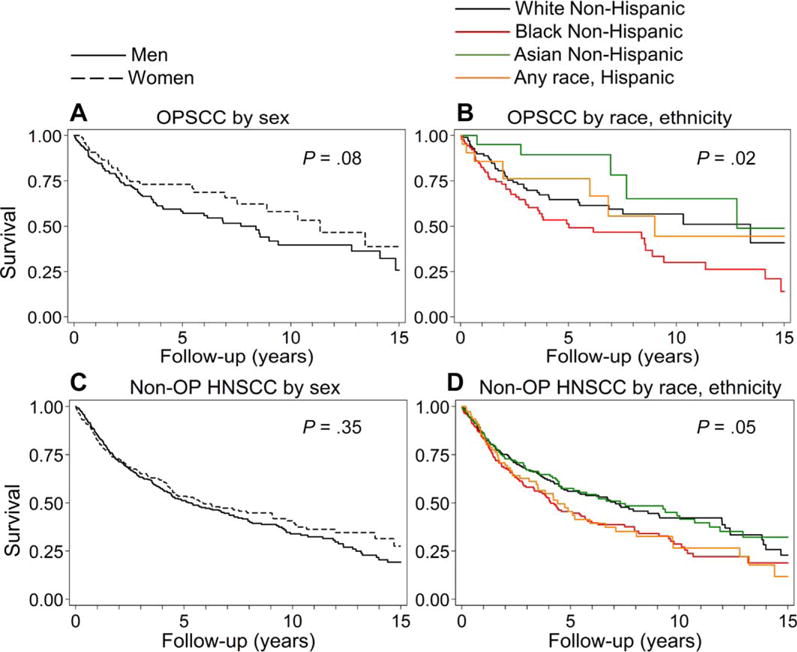Figure 2.

Survival by sex and race/ethnicity among OPSCC and non-OP HNSCC patients. (A) Overall survival for men (n = 160) and women (n = 79) with OPSCC was 58.3% and 73.1%, respectively, at 5 years and 39.6% and 58.1%, respectively, at 10 years. (B) Overall survival for white (n = 103), black (n = 94), Asian (n = 21), and Hispanic patients (n = 21) with OPSCC was 64.7%, 51.3%, 89.4%, and 76.2%, respectively, at 5 years and 56.8%, 30.0%, 65.2%, and 44.4%, respectively, at 10 years. (C) Overall survival for men (n = 389) and women (n = 232) with non-OP HNSCCs was 51.1% and 53.5%, respectively, at 5 years and 33.9% and 40.7%, respectively, at 10 years. (D) Overall survival for white (n = 212), black (n = 182), Asian (n = 149), and Hispanic patients (n = 78) with non-OP HNSCCs was 56.0%, 45.5%, 57.5%, and 45.5%, respectively, at 5 years and 42.2%, 28.6%, 43.3%, and 26.6%, respectively, at 10 years. HNSCC indicates head and neck squamous cell cancer; non-OP, nonoropharyngeal; OPSCC, oropharyngeal squamous cell cancer.
